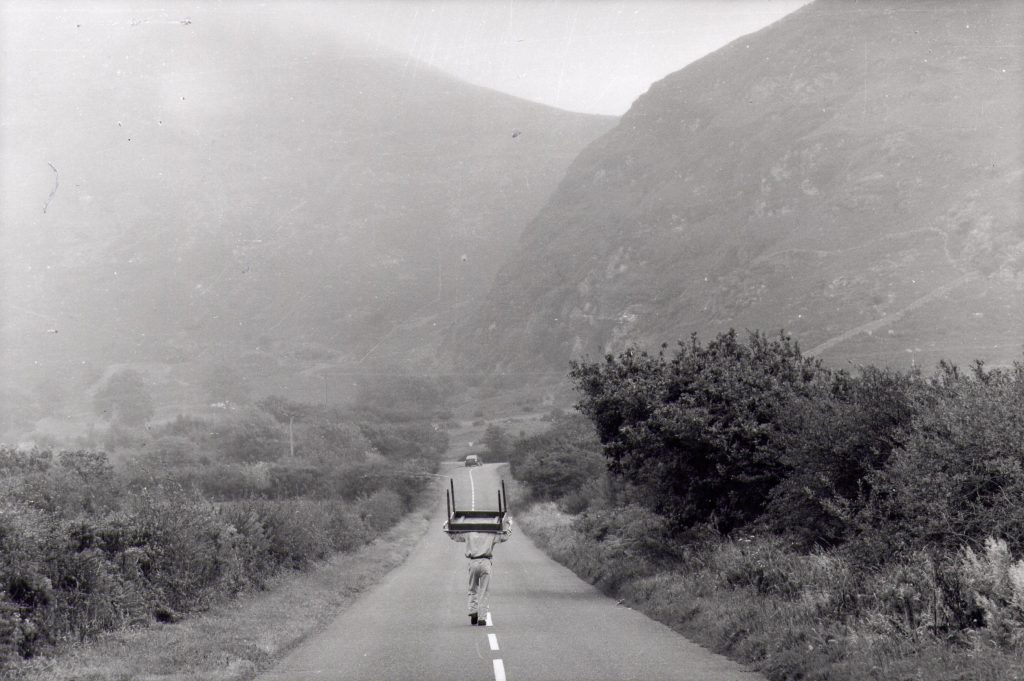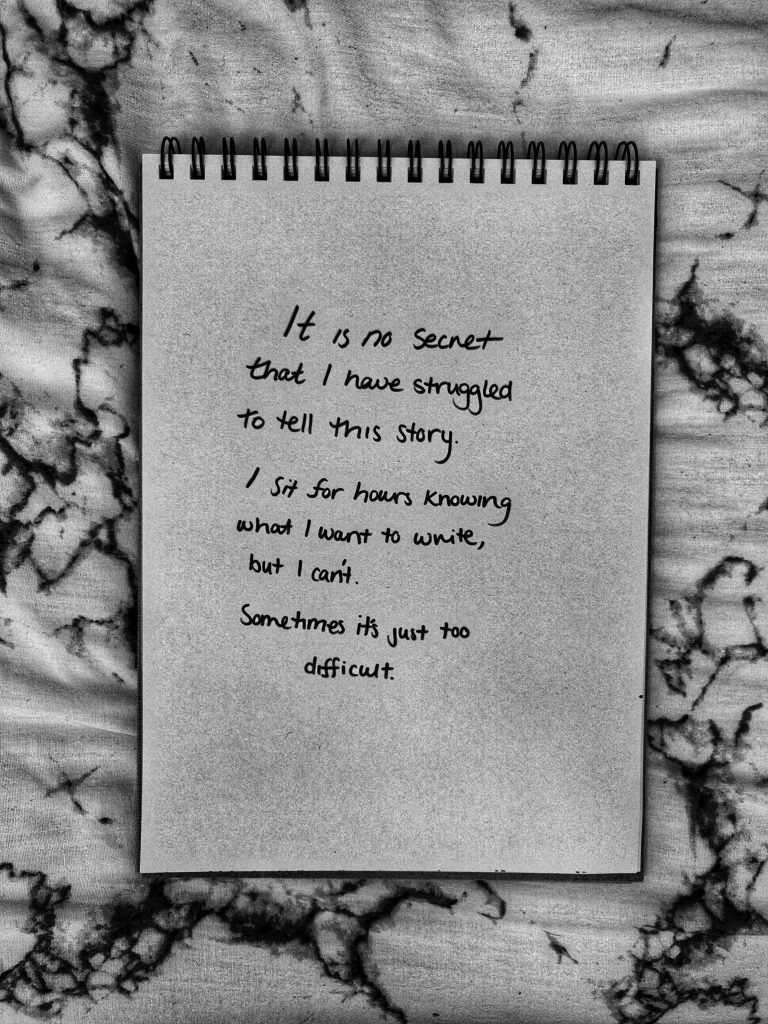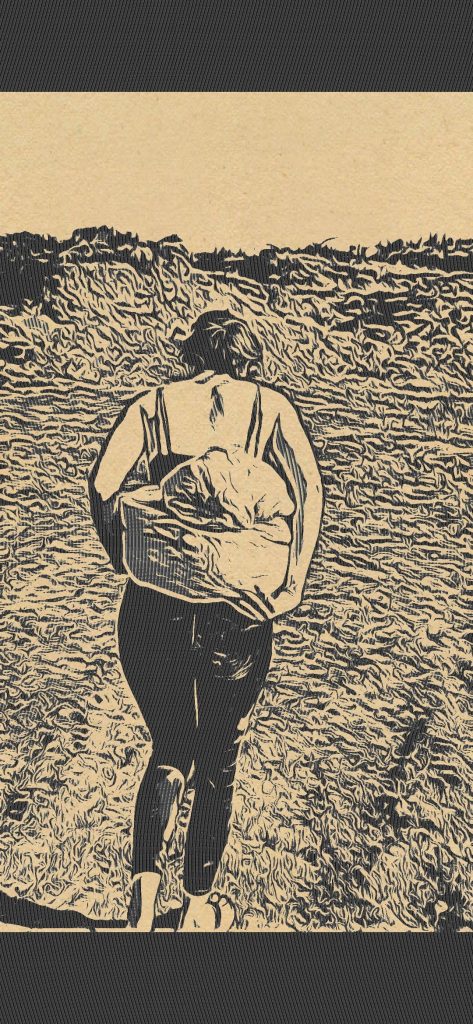Identity, chosen identity and the meaning of identity
Identity is difficult, identity is painful, and identity is futile; I find identity a hard pill to swallow and a difficult thing to understand. Through creating work about my identity, I have found myself asking what identity is and more importantly, what shapes my identity. If what Anthony Elliot and Paul Du Gay say is accurate and, ‘Identity has now become a prism through which other topical aspects of contemporary life are spotted, grasped, and examined.’ (Elliot and Du Gay, 2009, P.1) it makes sense why I feel the need to link my feelings with memories from the past and generally have a rose-tinted perspective on many aspects of growing up in Lesotho. I loved my childhood, and I really think that I’ve clung on to the identity of being Mosotho and why not? I was born in South Africa and raised in Lesotho for 14 years – this is where I feel my roots are and, ‘Roots offer a means of marking ourselves out as different from others and the same as those who share the same stories of origin’ (Woodward, 2002 P.144). It is on the question of origin that I get confused. Is the origin where you start your life? Or does it relate to where your parents and genetic makeup come from? There must be a certain amount of control people have over their identity because of factors such as genetic makeup, location, and politics they can’t control. Do we have a different identity when we are first born to when we die? What agency do we have concerning our identity?
How important is what we look like? Kath Woodward says, ‘Not only do visible differences signify identity, they also indicate the source of that identity. This can be through the way we speak, language or accents, how we dress, and the visible differences of skin colour’(Woodward, 2002, P.144). I feel that identity and the source of identity are different to me. Inevitably we are going to look like our parents; this is determined by our genes at birth. But I don’t think that necessarily determines who we are. I feel the way we are raised plays a more critical part in a person’s identity. Identity is a product of nature and nurture, but it is nurture that is dominant, and maybe individual agency is important too. Does the fact that my parents are white British mean I understand what it means to be white and British when I’ve been raised in Lesotho, in a culture different to that of my parents? If it did then this would imply that culture and identity are hardwired into our genes immutable and unchangeable. If this is the case, then the racial divide would be an insurmountable problem. With different people living in different hardwired culture incapable of understanding each other. My experience tells me that this cannot be the case – but identity is complex.
Inspiration
Santina Amato
(Amato, 2016)
While doing research on other artists who use dough as their main medium I came across a performance artist based in Chicago called Santina Amato. The use of dough in her work inspired me because of the way, ‘urgency is created and relationships [are] formed between ideas of birth, ageing, time, expansion, relationships, body limits, decay and death’ (Amato, 2015) within her work. I like the way she uses dough as another body in her work to help explore her relationship with, and view of her body.
One thing that I may try and do with my work in the future is use yeast in my dough so I get the same rising affect she does. This is something I wanted to do but due to Covid-19 I was unable to get any yeast.
Simon Whitehead

I found the work of Simon Whitehead compelling, especially his work Body Land Place. The reason I specifically looked at this piece was because of his journey within the piece. The journey he took to create this piece was made because of his interest in, ‘the places we make, the lands that shape us and our bodies that move through them’ (Whitehead, 2019). I was interested in the idea of ‘the land that shapes our bodies’, I felt I could draw parallels between this and my feelings that everywhere I’ve been has shaped me in some way.
Coming Home
(Kaiser Chiefs, 2014)
When I decided that I was going to create a virtual performance by filming the live performance, I did some research into videos that had been filmed in the moors. The music video for Coming Home by the Kaiser Chiefs came up, and I really liked it. I felt that it showed a journey and was in a similar landscape to the one I would be performing in. While filming the performance, I tried to make sure I was always in the landscape as they are in this video, I also tried to make sure that the camera moved with me instead of being stationary. I did this because I wanted the virtual audience to feel as if they were also part of the journey rather than just watching my journey.
Reflections

But I HATE Performance Art!
Performance art is a load of crap! That is how I had always felt towards any performance art I had seen; I found it really impossible to watch any performance art without finding myself cringing. As Bramish puts it, I had ‘never seen any performance art I didn’t hate or could relate to on any level.’ (Bramish, 2010) I was unhappy with the fact that every avenue I tried to explore in relation to my themes led me straight back to performance art because I couldn’t believe that performance art could be anything other than, ‘self-conscious nonsense’ (Bramish, 2010).
I found the process of creating this performance incredibly difficult for my mental health; it was because I found it difficult that I started to understand how performance art can be an essential (if not the only) form of performance for some performers’ stories. Using performance art meant I could create a piece of work about the themes of motherhood, identity, mental health, and journeys without having to find the words to have these discussions. It meant the meaning behind my work could be personal to me, but also be personal to whoever watches because I wouldn’t be influencing the audience’s thoughts by telling them what to think and see. I also wanted the performance to be as authentic to me as possible, not having a script or any speech for that matter helped me achieve that authenticity because it meant I didn’t feel the need to censor myself and the meaning behind my work, as Yana Meerzon says, ‘Autobiographical theatre based on text runs the danger of fake authenticity…The intensity of the abstract and codified movements dominates over verbal expression and thus guarantees the authenticity of the expression.’ (Meerzon, 2012, P.186-187)
I now feel that I have made peace with performance art because I understand that, sometimes things are too difficult to put into words, but that doesn’t mean these things can’t be expressed without using words. I no longer ‘regard performance artists as the great charlatans of our time’ (Bryant, 2010).
What now?

Now that this performance is finished what now? I feel that the performance will never really be over, and there will be space for a second, third, fourth performance etc. My Journey will continue and evolve and in turn, so will my feelings towards my identity, my concept of home and my relationship with motherhood. However, for now, I am leaving with a better understanding of my thoughts and feelings but no resolve as such.
Bibliography
- Amato, S (2015) Untitled (Self Potrait), 2015 [Internet]. Available from https://santinaamato.com/projects/5893732. [Accessed 25th May 2020].
- Anon (2015) It’s Time For Africa. Available from https://jordanink.wordpress.com/2015/07/03/its-time-for-africa/. [Accessed 3rd June 2020].
- Bramish (2010) Most performance art is pretentious bullshit [Internet]. Available from https://www.threadless.com/forum/post/623349/most_performance_art_is_pretentious_bullshit/. [Accessed 21st May 2020].
- Bryant, G (2010) Why I Hate Performance Artists [Internet]. Available from http://blogs.capecodonline.com/cape-cod-online-editor/2010/09/11/why-i-hate-performance-artists/. [Accessed 25th May 2020].
- De Lang, R. (2020) On the geometric designs of the Basotho called Litema [Internet]. Available from https://www.designindaba.com/articles/point-view/geometric-designs-basotho-called-litema. [Accessed 29th May 2020].
- Elliott, A. and Du Gay, P. eds. (2009) Identity in question. Los Angeles, Calif., Sage.
- Jennings, S. and Holmwood, C. eds. (2016) Routledge international handbook of dramatherapy. London ; New York, Routledge, Taylor & Francis Group.
- Jones, P. (2010) Drama as therapy: clinical work and research into practice. London, Routledge.
- Kaiser Chiefs (2014) YouTube [Internet]. Available from https://www.youtube.com/watch?v=MPipMQvKgKk. [Accessed 4th March 2020].
- Kidd, W. and Teagle, A. (2012) Culture and identity. 2nd ed ed. Skills-based sociology. Basingstoke, Palgrave Macmillan.
- Leveton, E. (2010) Healing collective trauma using sociodrama and drama therapy. New York, Springer Pub. Co.
- Mayberry, K. (2016) Third Culture Kids: Citizens of everywhere and nowhere [Internet]. Available from https://www.bbc.com/worklife/article/20161117-third-culture-kids-citizens-of-everywhere-and-nowhere. [Accessed 4th June 2020].
- Meerzon, Y. (2012) Performing exile, performing self: drama, theatre, film. Houndmills, Basingstoke, Hampshire ; New York, NY, Palgrave Macmillan.
- Pollock, D.C., Van Reken, R.E. and Pollock, M.V. (2017) Third culture kids: growing up among worlds. Third edition ed. Boston, Nicholas Brealey Publishing.
- Santinaamato (2016) Carmen [Internet video]. Avaliable from
https://vimeo.com/158973855 [Accessed 24th May 2020]. - Whitehead, S (2019) body land place. [Internet] Available from http://simonwhitehead.net/2020/01/27/body-land-place/. [Accessed 25th May 2020].
- Woodward, K. (2002) Understanding identity. London : New York, Arnold ; Distributed in the USA by Oxford University Press.